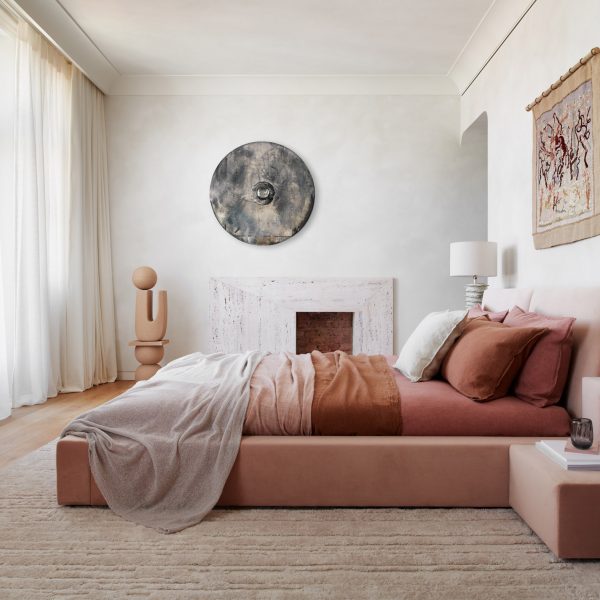Tala Fustok Studio has transformed the inside of an condominium in west London into a “calm sanctuary” made up of meticulously selected artworks and furnishings motivated by the travels of its operator.
The Palace Gate condominium is found on the fourth floor of a Victorian mansion block neighbouring Hyde Park in the Royal Borough of Kensington and Chelsea.

Neighborhood interior designer Tala Fustok set out to transform the 4-bedroom assets into a stress-free pied-a-terre that contains a selection of contemporary artworks.
“I wanted to build a serene sanctuary to stability the hustle and bustle of the city and the owner’s way of life,” Fustok told Dezeen.
“Our client is an ardent traveller, frequenting North Africa and copious European metropolitan areas,” she included. “We preferred to assure this was reflected in the design and style, as a kind of escapism and bringing a dose or reminder of all those options to their London property.”
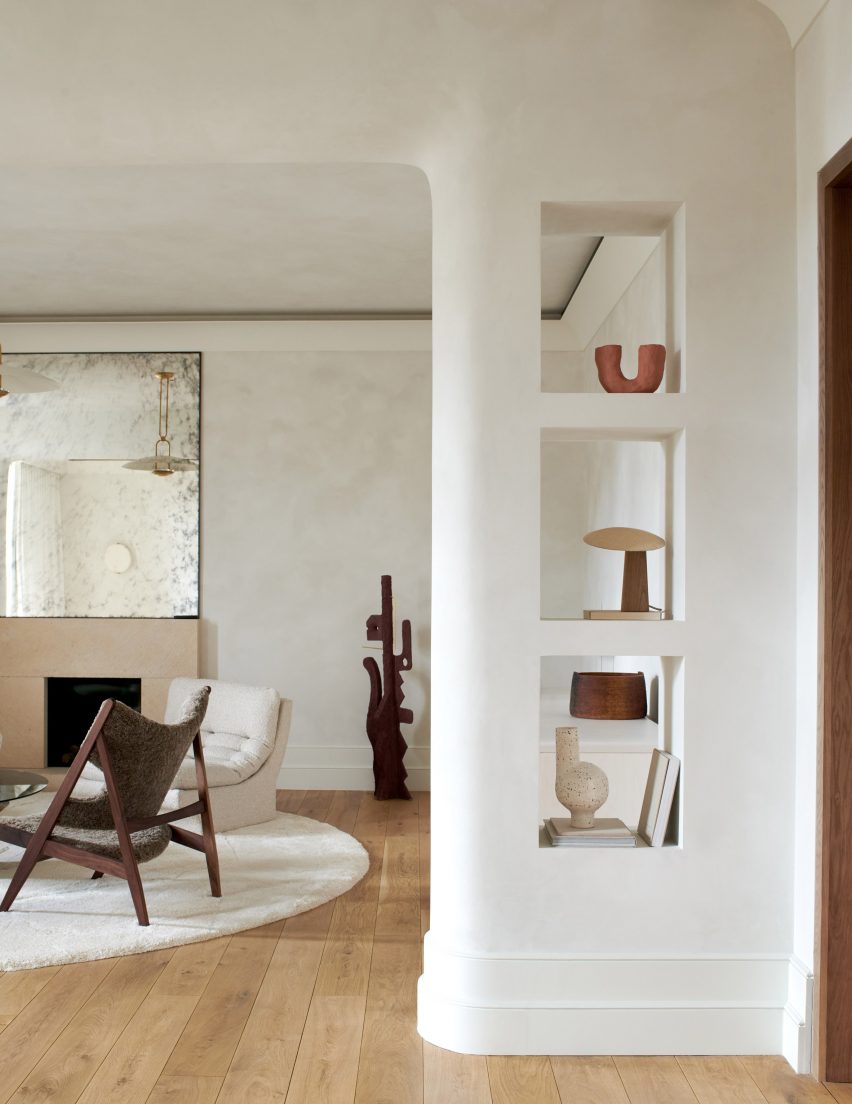
The inside options a palette of smooth colors supposed to evoke a sunset, with textures of stone and earthy fabrics incorporating to the nomadic and purely natural experience.
The 252-sq.-metre inside was reorganised through many structural interventions that opened up the residing and eating region, as perfectly as combining two bedrooms to sort a substantial principal bedroom and dressing location.
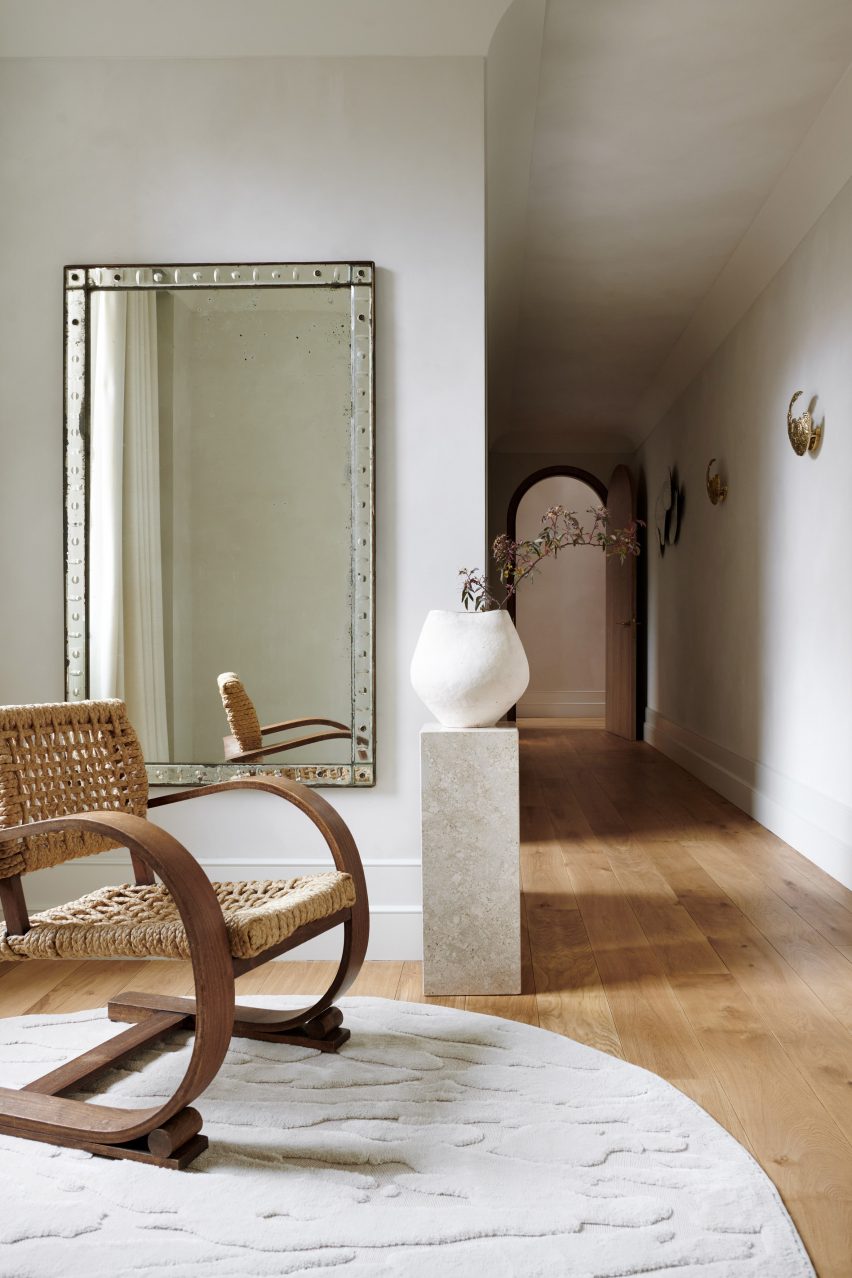
In the major residing area, steel beams are concealed in just a area divider that includes curved surfaces and open shelves that allow light and sights through, while supplying spaces for exhibiting artwork.
Deep hues and textures which includes plastered walls and velvet upholstery include richness and selection to the plan, producing the most of the light-weight that floods into the southwest-experiencing spaces.
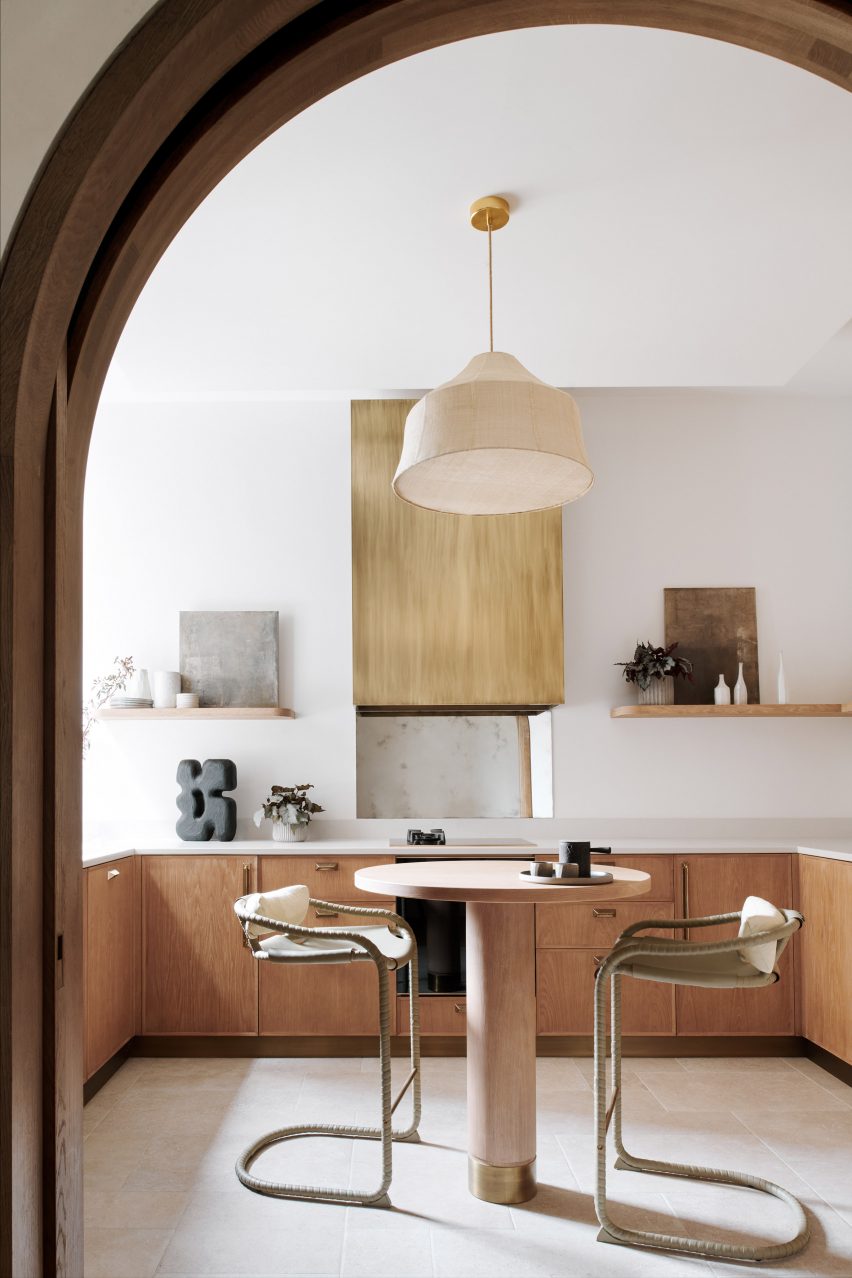
A monochromatic color plan types a simple backdrop for the artworks, vintage home furniture and bespoke elements developed to improve the home’s restful environment.
Fustok’s studio was included in choosing the special furnishings and art for the dwelling in get to elevate the spaces and develop regularity in the course of the various rooms.
A pared-back again entrance corridor – that contains a Venetian mirror, a woven chair and a vase from east London’s M.A.H Gallery – leads by way of to the eating place in which a mirror from The Antique Mirror Enterprise hangs over a painted brick fire.
A 1970s Italian travertine table brings together with a curved couch to make a house for casual dining. On best of the table is a centrepiece from London’s Vessel gallery and beneath sits a shaggy rug by designer Tim Web site.
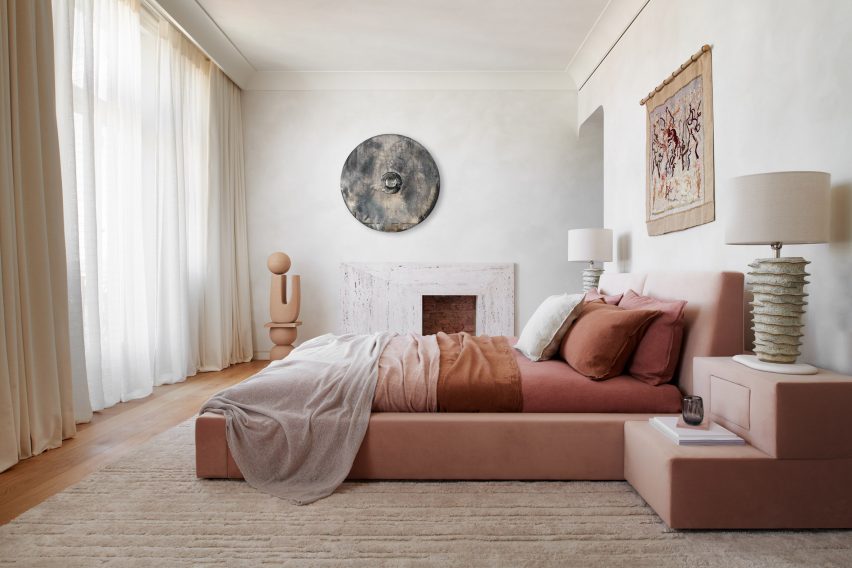
Fustok additional double arched doorways to connect the eating space with the adjacent kitchen area, wherever wood cabinetry contrasts with brass information which includes the cooker hood.
The residing home options a travertine hearth along with a mirror and rug that match individuals made use of in the eating place. Bespoke furnishings produced of bleached plywood, brass and timber contribute to the space’s comfortable, rustic character.
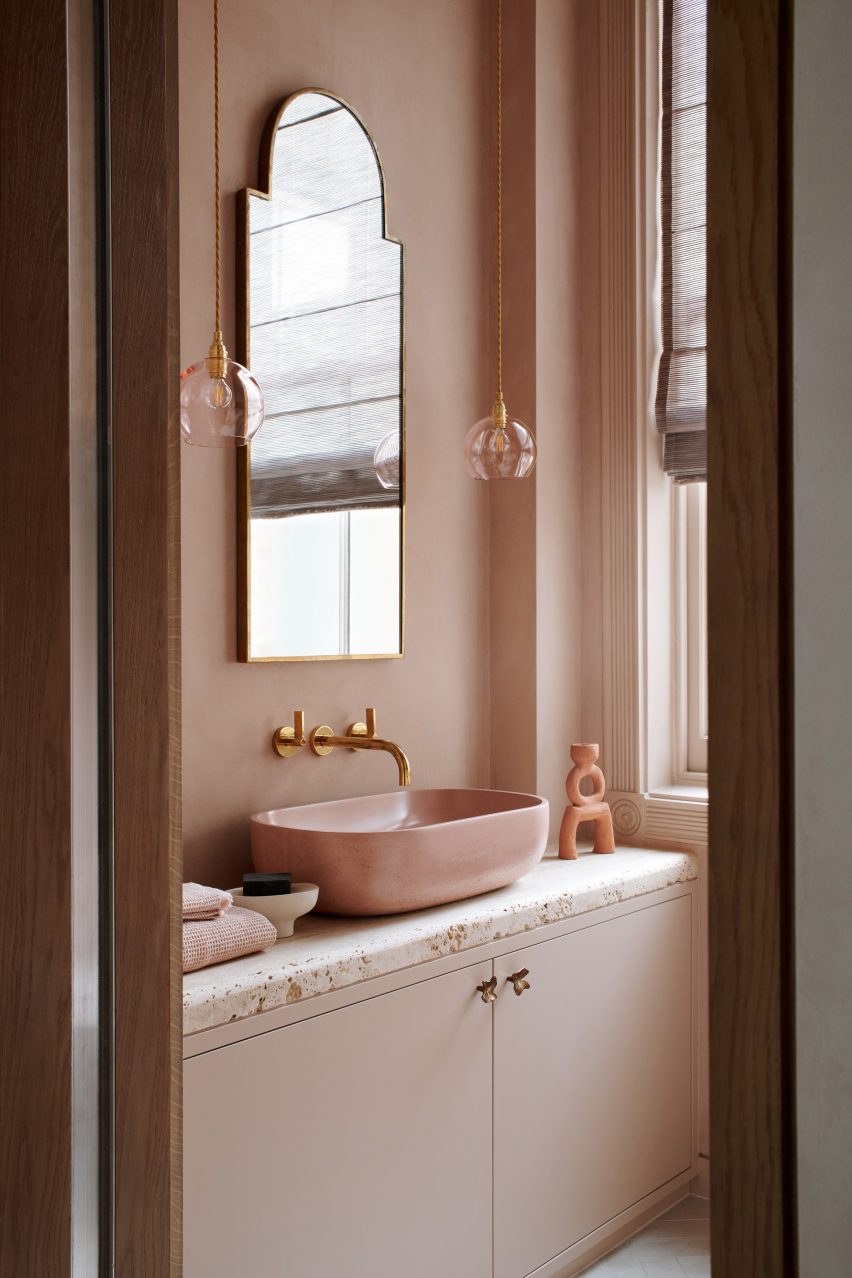
In the primary bed room, a 1960s-type mattress upholstered in dusty pink velvet provides a bold centrepiece.
The tapestry earlier mentioned the bed is from London gallery Schmid McDonagh, while a bespoke mirror by French artist Christophe Gaignon is positioned higher than the stone hearth.
A dressing location together with the major bedroom is arranged all-around a bespoke storage island wrapped in leather-based and plywood, which is illuminated from previously mentioned by a pendant light from British style studio Pinch.
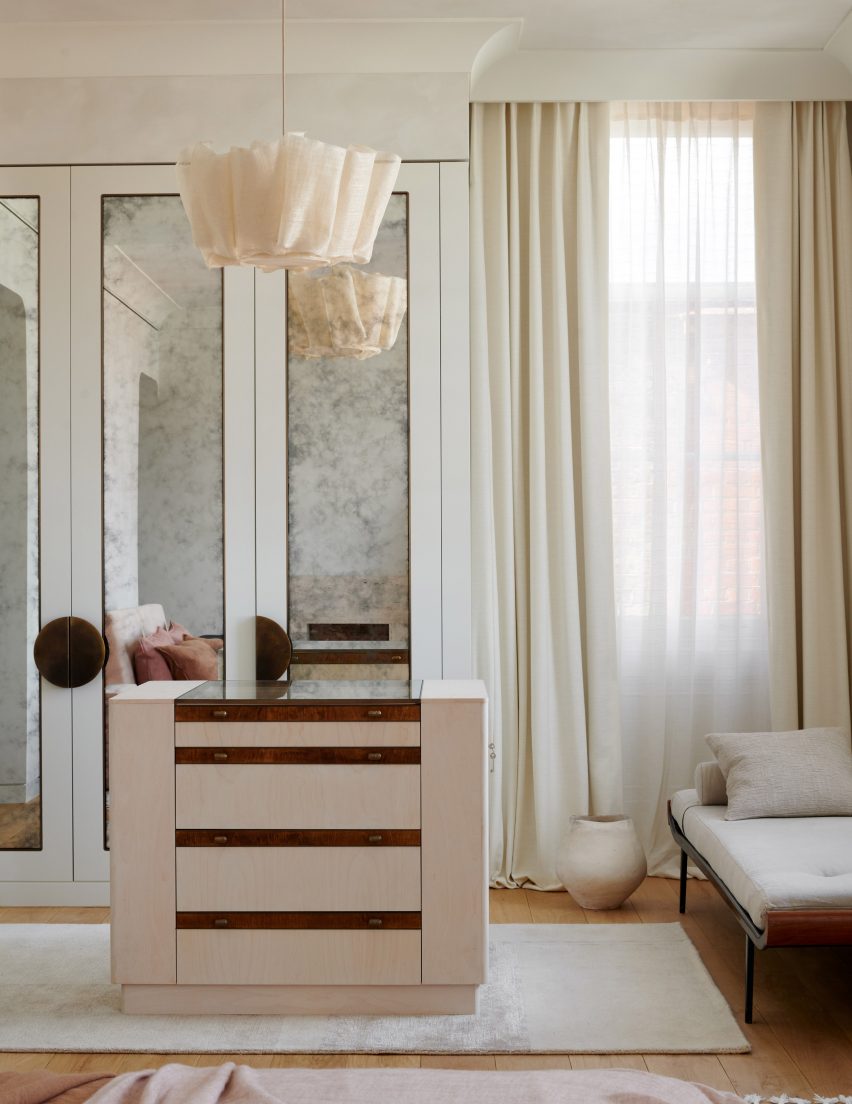
The Moroccan-knowledgeable en-suite rest room includes a bespoke travertine sink and zellige tiles in the shower. The style and design of this area encapsulates the nomadic inspirations seen throughout the residence.
Tala Fustok examined at the Architectural Association ahead of setting up her studio in west London.
Her previous jobs include a Manhattan loft with a tranquil atmosphere and an place of work for match developer Ninja Idea in Cambridge, which capabilities a blood-pink bar and an all-blue cinema place.
The styling is by Sania Pell and pictures by Michael Sinclair.


